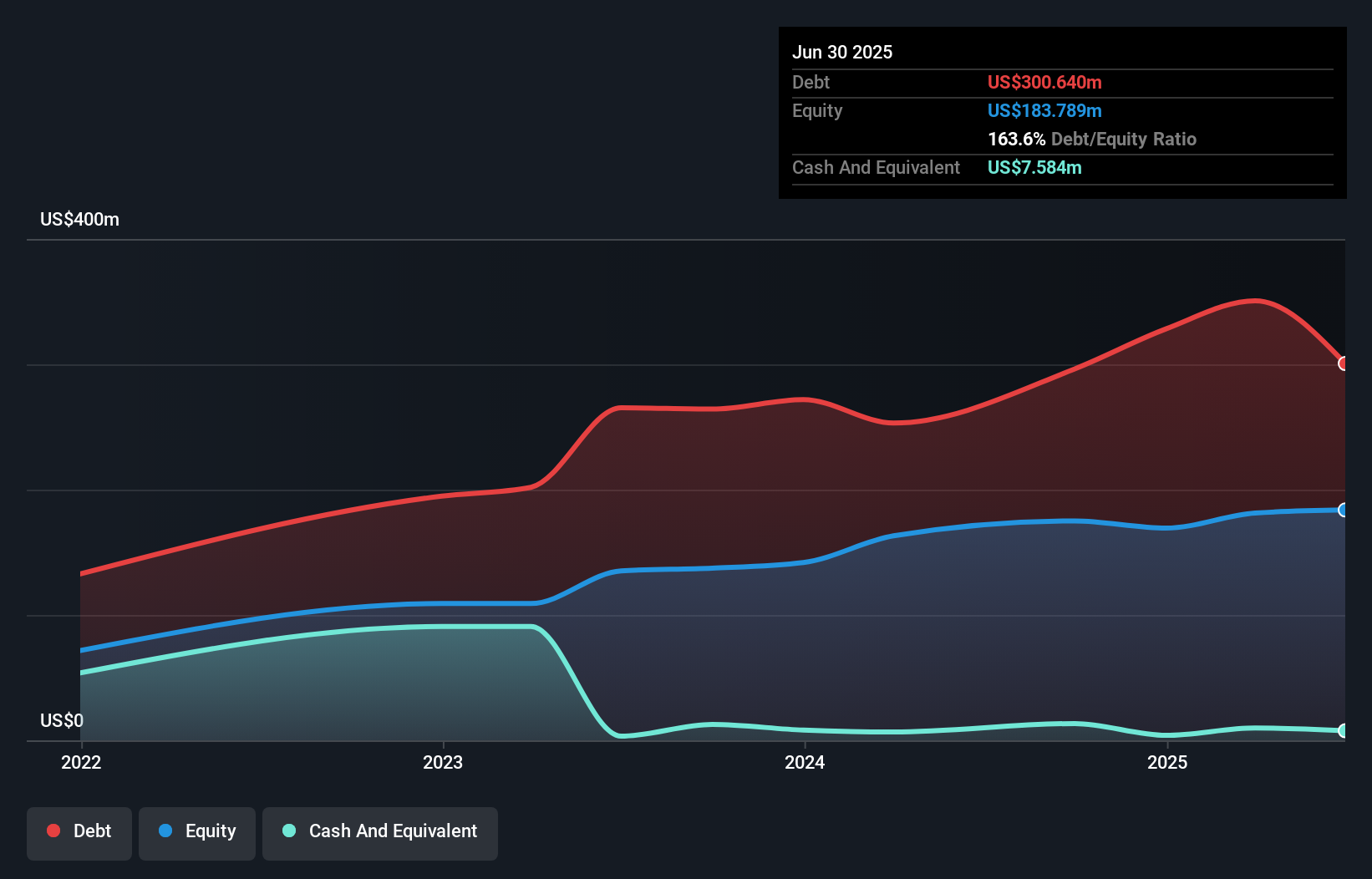Warren Buffett famously said, 'Volatility is far from synonymous with risk.' So it seems the smart money knows that debt - which is usually involved in bankruptcies - is a very important factor, when you assess how risky a company is. As with many other companies Sucro Limited (CVE:SUGR) makes use of debt. But the real question is whether this debt is making the company risky.
When Is Debt Dangerous?
Debt assists a business until the business has trouble paying it off, either with new capital or with free cash flow. If things get really bad, the lenders can take control of the business. However, a more frequent (but still costly) occurrence is where a company must issue shares at bargain-basement prices, permanently diluting shareholders, just to shore up its balance sheet. By replacing dilution, though, debt can be an extremely good tool for businesses that need capital to invest in growth at high rates of return. When we examine debt levels, we first consider both cash and debt levels, together.
What Is Sucro's Net Debt?
You can click the graphic below for the historical numbers, but it shows that as of June 2025 Sucro had US$300.6m of debt, an increase on US$253.1m, over one year. However, it does have US$7.58m in cash offsetting this, leading to net debt of about US$293.1m.

A Look At Sucro's Liabilities
Zooming in on the latest balance sheet data, we can see that Sucro had liabilities of US$302.7m due within 12 months and liabilities of US$138.8m due beyond that. On the other hand, it had cash of US$7.58m and US$97.0m worth of receivables due within a year. So its liabilities total US$337.0m more than the combination of its cash and short-term receivables.
This deficit casts a shadow over the US$222.3m company, like a colossus towering over mere mortals. So we definitely think shareholders need to watch this one closely. After all, Sucro would likely require a major re-capitalisation if it had to pay its creditors today.
See our latest analysis for Sucro
We measure a company's debt load relative to its earnings power by looking at its net debt divided by its earnings before interest, tax, depreciation, and amortization (EBITDA) and by calculating how easily its earnings before interest and tax (EBIT) cover its interest expense (interest cover). This way, we consider both the absolute quantum of the debt, as well as the interest rates paid on it.
Weak interest cover of 1.8 times and a disturbingly high net debt to EBITDA ratio of 6.3 hit our confidence in Sucro like a one-two punch to the gut. This means we'd consider it to have a heavy debt load. Even more troubling is the fact that Sucro actually let its EBIT decrease by 6.7% over the last year. If it keeps going like that paying off its debt will be like running on a treadmill -- a lot of effort for not much advancement. When analysing debt levels, the balance sheet is the obvious place to start. But you can't view debt in total isolation; since Sucro will need earnings to service that debt. So when considering debt, it's definitely worth looking at the earnings trend. Click here for an interactive snapshot.
Finally, while the tax-man may adore accounting profits, lenders only accept cold hard cash. So the logical step is to look at the proportion of that EBIT that is matched by actual free cash flow. Over the last three years, Sucro saw substantial negative free cash flow, in total. While investors are no doubt expecting a reversal of that situation in due course, it clearly does mean its use of debt is more risky.
Our View
To be frank both Sucro's net debt to EBITDA and its track record of converting EBIT to free cash flow make us rather uncomfortable with its debt levels. And furthermore, its interest cover also fails to instill confidence. Considering all the factors previously mentioned, we think that Sucro really is carrying too much debt. To our minds, that means the stock is rather high risk, and probably one to avoid; but to each their own (investing) style. When analysing debt levels, the balance sheet is the obvious place to start. But ultimately, every company can contain risks that exist outside of the balance sheet. These risks can be hard to spot. Every company has them, and we've spotted 2 warning signs for Sucro you should know about.
If, after all that, you're more interested in a fast growing company with a rock-solid balance sheet, then check out our list of net cash growth stocks without delay.
New: Manage All Your Stock Portfolios in One Place
We've created the ultimate portfolio companion for stock investors, and it's free.
• Connect an unlimited number of Portfolios and see your total in one currency
• Be alerted to new Warning Signs or Risks via email or mobile
• Track the Fair Value of your stocks
Have feedback on this article? Concerned about the content? Get in touch with us directly. Alternatively, email editorial-team (at) simplywallst.com.
This article by Simply Wall St is general in nature. We provide commentary based on historical data and analyst forecasts only using an unbiased methodology and our articles are not intended to be financial advice. It does not constitute a recommendation to buy or sell any stock, and does not take account of your objectives, or your financial situation. We aim to bring you long-term focused analysis driven by fundamental data. Note that our analysis may not factor in the latest price-sensitive company announcements or qualitative material. Simply Wall St has no position in any stocks mentioned.
About TSXV:SUGR
Slightly overvalued with imperfect balance sheet.
Market Insights
Community Narratives




